Traditional Braces – Wellesley, MA
Straighten Your Smile for Improved Oral Health
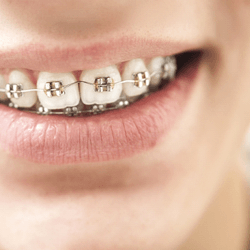
Misaligned teeth can cause a range of oral health problems, including an increased risk of cavities and gum disease. Speech and bite function may also be affected. Fortunately, there are ways to address crooked teeth, including traditional braces in Wellesley. This tried-and-true treatment can work for even complex cases. Read on below to learn more about it and what you can expect with it. Get in touch with us when you are ready to schedule an orthodontic consultation.
Why Choose Wellesley Dental Group for Traditional Braces?
- Experienced & Highly Qualified Team
- Multiple Types of Braces Available
- Improve Your Appearance and Oral Health
How Do Traditional Braces Work?

Traditional braces have two primary components. There are brackets, which we bond onto the teeth. An arch wire connects those brackets. Together, the wire and brackets apply consistent, gentle pressure to the teeth to move them into their proper positions. Adjusting the wire every 6 – 8 weeks ensures that patients continually make progress with their treatment.
Total treatment time with braces varies from case to case, but most patients see ultimate results in 18 – 36 months.
Who Can Traditional Braces Help?

Braces are much more than a cosmetic treatment. In fact, they can significantly improve oral health by addressing issues such as misaligned bites, crooked teeth, gaps between the teeth, and more. During your consultation, we will be able to let you know what braces may be able to accomplish in your unique case. In the meantime, here is a bit more explanation about how they can help with various common orthodontic problems:
Crowded Teeth
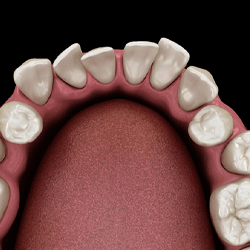
Crowded teeth can easily trap food between them, leading to a heightened risk of bad breath, tooth decay, and gum disease. Fortunately, braces can help to give each tooth the space it needs to function optimally. This may be accomplished with the help of extractions, special orthodontic accessories, or other aids.
Gaps Between Teeth
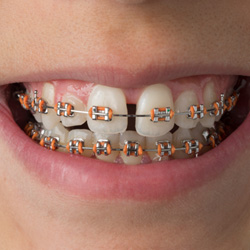
While a gap between the teeth is often regarded as a purely aesthetic issue, it can have consequences for gum health. To close empty spaces, braces can move the teeth closer together, thereby creating a more attractive smile that is at a lower risk of a number of oral health issues.
Overbite
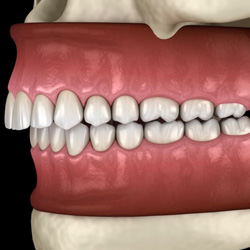
An overbite is the issue that occurs when the top teeth rest too far in front of the lower teeth. This can lead to a number of complications, such as jaw pain, speech challenges, uneven wear and tear on the teeth, and difficulty with closing and opening the mouth. Braces, along with appropriate accessories, can often correct an overbite.
Underbite
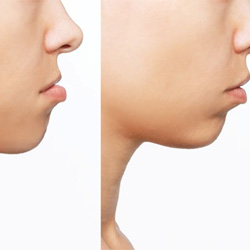
If your bottom teeth rest in front of your top teeth, you have an orthodontic problem known as an underbite. This can interfere with your speech, negatively affect your facial aesthetics, and lead to other issues. Fortunately, braces are a reliable way to correct many cases of underbite.
Crossbite
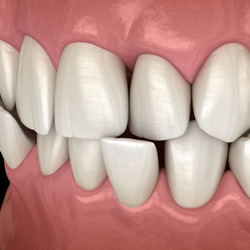
If only some of your bottom teeth rest in front of your top teeth, you may have a crossbite. This can contribute to speech difficulties, teeth grinding and clenching, facial asymmetry, and other complications. The good news is that braces are often able to shift the teeth in a way that eliminates a crossbite and leads to improved oral health and function.
Open Bite
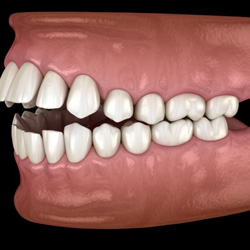
An open bite describes the problem wherein there is a vertical gap between the front teeth, even when the back teeth are touching one another. This can interfere with pronunciation, cause increased wear and tear on the back teeth, and have a negative impact on facial aesthetics. Very often, braces can be used to close an open bite.
Caring for Your Braces
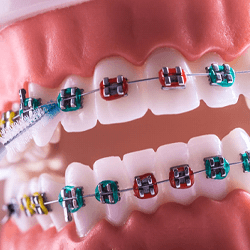
Here are some practical tips for caring for braces:
- Diligently attend all recommended appointments with your orthodontist or dentist in Wellesley.
- Stick to a thorough oral hygiene routine. You should brush and floss after each meal, drink plenty of water, and use special tools to clean around your braces.
- Avoid foods that might damage your braces, such as extremely sticky or chewy items. For example, things like gummy bears and pizza crust should be avoided. It is also smart to avoid foods that can easily get stuck in braces, such as popcorn.
Understanding the Cost of Traditional Braces
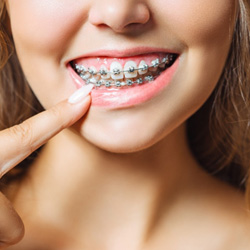
Traditional metal braces are usually one of the more affordable orthodontic treatment options. However, their cost can vary based on multiple factors. When you visit us for a consultation, we can share some specific numbers and help you understand your payment options. For example, we welcome insurance and work with third-party companies to provide low-interest financing.
Factors That Affect the Cost of Traditional Braces
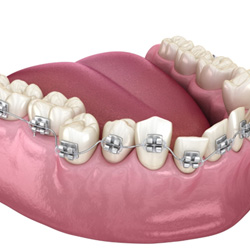
There are a number of factors that can influence the cost of traditional metal braces, including the following:
- Severity of Dental Misalignment: More complex or severe misalignment typically requires longer treatment, more visits to our office, and additional orthodontic accessories. Logically, such factors can affect overall costs.
- Age of the Patient: Children and teenagers often see results faster than adults, and adults may require more extensive treatment because their teeth tend to move a bit more slowly. This may have a slight impact on costs.
- Patient Compliance: Following our instructions — such as maintaining proper oral hygiene and attending scheduled appointments — can help keep treatment on track, potentially helping you avoid additional fees.
Professional Braces vs. “DIY” Braces: Which Costs More?
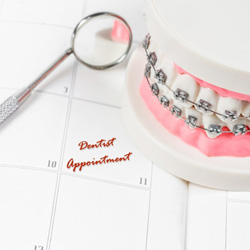
Have you seen hacks on social media that claim to be able to straighten teeth with the use of household products, such as paperclips and superglue? While the idea of “DIY” braces might seem appealing due to their lower upfront costs, these do-it-yourself methods come with significant drawbacks that can end up costing you more in the long run. Without the expertise of a qualified dental team, DIY braces can lead to improper tooth movement, gum damage, bite problems, and other serious issues. Because these treatments lack professional oversight, complications are more likely, often requiring corrective procedures that are both expensive and time-consuming.
Investing in professional treatment right from the beginning can lead to better results and lower overall costs.
Does Dental Insurance Cover Braces?

Some premium dental insurance plans apply to braces. Here are a few important notes about coverage:
- Coverage for minors is more common than coverage for adults.
- Your plan might cover up to 50% of the cost of braces, after any applicable deductibles.
- Your plan may enforce a lifetime orthodontic maximum, which is a hard limit on how much your insurance will pay for braces.
Our Wellesley team welcomes insurance, and we will be happy to help you figure out how your benefits may apply.
Options for Making Braces Affordable

Outside of insurance, other provisions that might make your braces more affordable include:
- We work with CareCredit and Sunbit to provide low-interest payment plans for qualified patients. We can walk you through the easy application process.
- Essential Dental plan. This discount plan is geared toward patients without insurance. It provides reduced fees on many of the services available in our office.
Are you interested in learning more about braces and their cost? Contact our Wellesley team today!
Traditional Braces FAQs
Am I Too Old to Get Braces?
You are never too old to benefit from orthodontic treatment! Many adults seek braces later in life to improve dental health and appearance. Age does not prevent teeth from moving; what matters most is the health of your gums and bones.
Keep in mind, though, that as an adult, your experience might be a bit different from that of younger people. For example, your teeth may move a bit more slowly due to slowed remodeling of your jawbone. You might also find that your insurance is less willing to cover your treatment. (Our team offers convenient financing, and most patients find that this provision can allow them to undergo the needed treatment.)
What Happens After You Get Your Braces Off?
After your braces are removed, you still have some work to do.
Teeth have a sort of memory, which means that they are likely to drift into their former positions if nothing helps to keep them in their new places. That is why we will provide you with a custom retainer, a small device that will help to solidify your new smile.
At first, you should wear your retainer as close to 24/7 as possible, removing it only when you eat and take care of your oral hygiene. Later, you may only need to wear it at night. Eventually, you may need to use it just a few nights each week.
How Long Do Traditional Braces Take?
Treatment time with traditional braces in Wellesley varies with individual needs. Most patients wear braces for 18 to 24 months. Some cases require more or less time depending on their complexity. Factors like your age and compliance with treatment guidelines can also play a role in determining how long your treatment takes.
Our team will provide you with a timeline estimate during your consultation. We can also offer tips to help you avoid unnecessary delays in your treatment’s progress.
Do Traditional Braces Hurt?
You may experience some discomfort when your braces are first placed or adjusted. This is normal and usually subsides within a few days. Over-the-counter pain relief can help manage mild soreness, and soft foods are often recommended during initial adjustment periods. Sipping on cool water can also be helpful.
We are available to answer questions and provide advice on minimizing discomfort. Of course, if you ever experience severe or prolonged pain, you should contact us right away.
What Can You Not Eat with Traditional Braces?
Certain foods should be avoided with traditional braces to prevent damage and maintain your oral health. Hard, sticky, and chewy foods often pose a risk to brackets and wires. We advise avoiding things like nuts, popcorn, caramel, and gum. You should also cut tough foods into small pieces before eating them.
Our team will provide you with detailed guidelines and practical tips on food choices. Following our recommendations can help you achieve a smooth and successful treatment experience.
